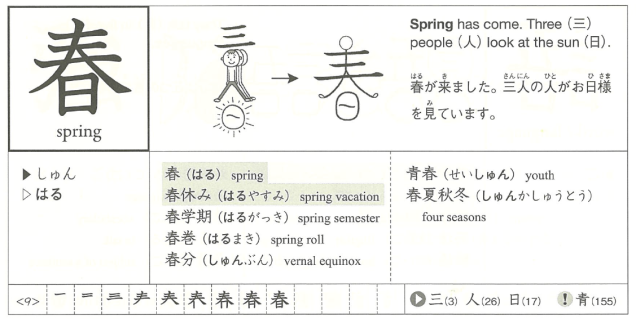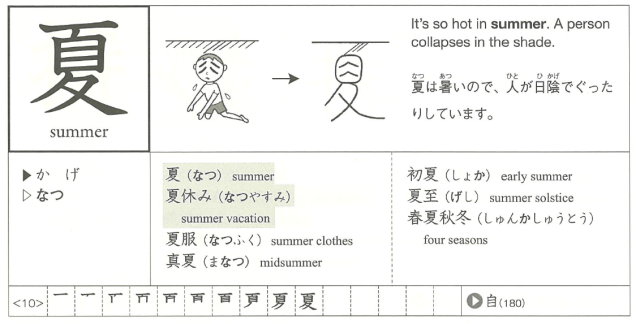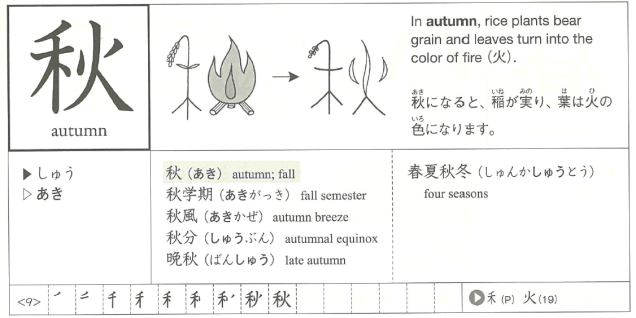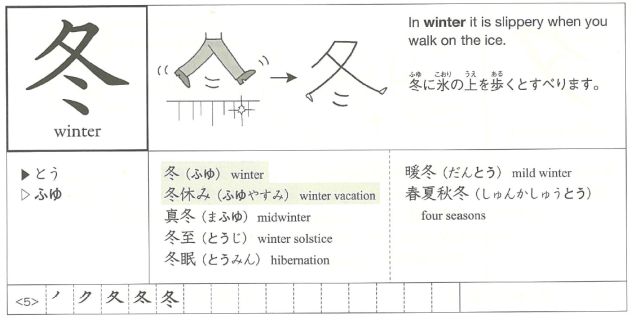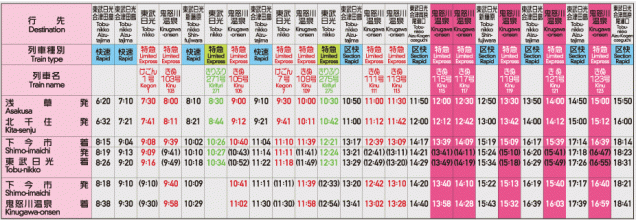When making a reservation for accommodation, there is some information you need to provide to the staff so they can find the most appropriate room available for you. The details may include:
- Date
- Duration of stay
- Number of people
- Bed required
- Smoking or Non-Smoking and
- Preferences for views.
Date
Refer to the section on Months and Dates here.
-
九月二十一日から九月二十五日までよやくしたいんですが…
Duration of stay
To refer to the length of stay, you would often talk about the nights you will be sleeping in the accommodation. (1 night and 2 days)
Use the counter 〜泊(はく・ぱく).
- 一泊(いっぱく)
- 二泊(にはく)
- 三泊(さんぱく)
- 四泊(よんはく)
- 五泊(ごはく)
- 六泊(ろっぱく)
- 七泊(ななはく)
- 八泊(はっぱく)
- 九泊(くはく)
- 十泊(じゅっぱく)
When Japanese people talk about the length of a trip, they would say:
- 一泊二日(いっぱくふつか)
- 三泊四日(さんぱくよっか)
- 九月十四日から三ぱくよやくおねがいします。
Number of People
Refer to person-counter revision section.
The staff may ask, 何めい(名)さまですか。which is the politer way of asking 何人ですか。
You may answer using both めい(名)or 人.
- 2名です。
- 大人二人と子ども一人です。
Types of Rooms
To refer to the size of bed, you may use the English terms:
- シングル
- ダブル
- キング etc.
To ask for a smoking or a non-smoking room, use the following phrases
- きつえんへや (smoking room)
- きんえんへや (non-smoking room)
Facilities
〜つき can be used after many words to mean ‘including’ or ‘attached’.
- 食じつき (with meal)
- バスとトイレつき (with bath and toilet)
Preferences for View
見えます, as we have learnt previously, is the potential form of 見ます which means ‘to be visible’ ‘can be seen’ or ‘to come into sight’.
Therefore, you may use this phrase to ask for an ocean view room.
- うみが見えるへや
- ふじ山が見えるへや
Asking for Vacancy/Availability
The phrase 「あいていますか」can be used to ask for availability.
Consider the following sentence.
九月七日からダブルで三泊よやくしたいんですが、うみが見えるへやはあいていますか。
The speaker is wanting to reserve a double room with an ocean view for 3 nights from 7th September.
You can use 「あいています」interchangeably with 「あります」.
おんせんつきのきんえんへやがありますか。
The staff will often respond in a polite form:
はい、五月十五日から十七日まで、シングルが二つございます。
Listening Practice
Reading Practice
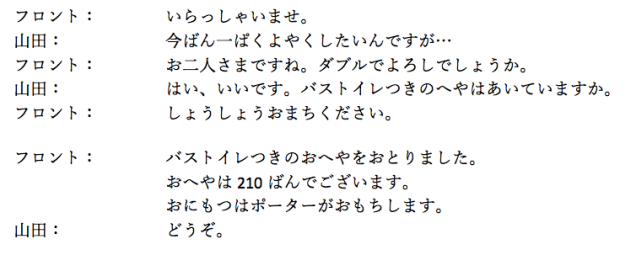
Read the above dialogue between the hotel staff and Yamada.
What do you notice about the difference in language between the two speakers?
Why are they different?

